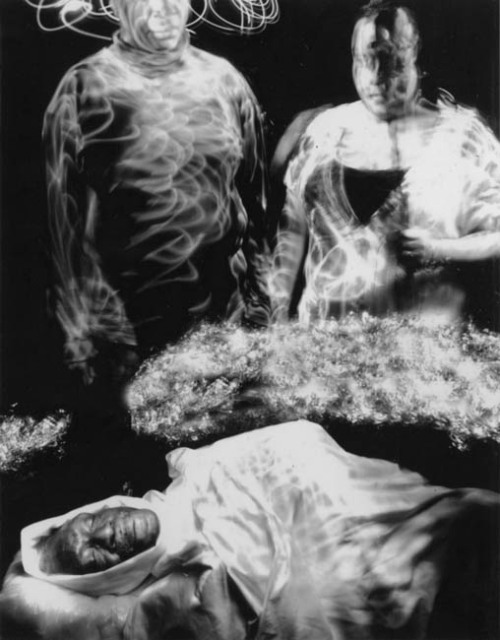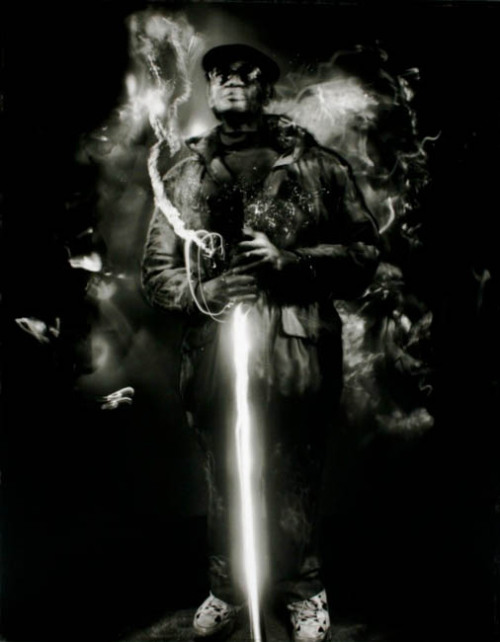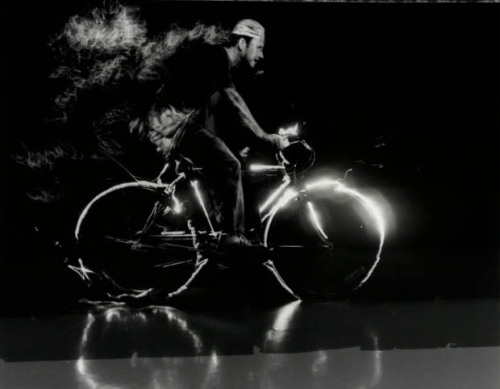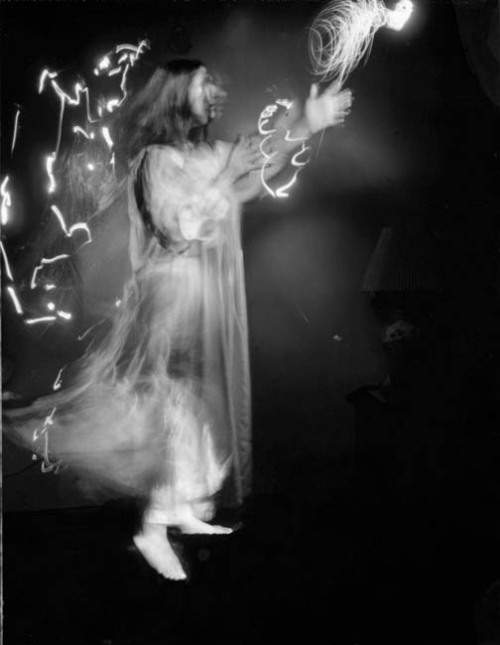#painting with light
The Surreal Light Painting Photography of a Blind Photographer
Sonia Soberats’ journey in photography didn’t start until she couldn’t see the photographs she was producing. Around two decades ago, she lost her eyesight to glaucoma between losing her son to Hodgkin’s disease and her daughter to ovarian cancer. At the turn of the century, Soberats began taking photography lessons in New York City as a form of therapy and self-expression. Her technique of choice? Light painting.
The New York Times writes that Soberats uses her hands to “see” what she is painting into the frame:
[…] in the studio, [Soberats] works in complete darkness, always with the help of a seeing assistant. She arranges her models, using her hands to feel every aspect of the image, instructing her assistant where to place the edges of the frame.
“I feel your face, your hair, then I’ll ask you: ‘Are you light-colored? Or dark? Is your hair blonde or brown or black?’ ” she said. “So with asking and touching, then I’ll get an idea of what I have to work with.”
Ms. Soberats then asks her assistant to open the shutter, and using various light sources, including flashlights and Christmas lights, she darts about the frame like Tinkerbell, illuminating details within the image. The shutter remains open anywhere from two minutes to an hour.
The technique is a slow one: only three or four photographs might result from a back-breaking 90-minute photo shoot.
Soberats has begun showing her work to the world through solo exhibitions — her first one, titled Visión Intransferible, was held in Caracas, Venezuela earlier this year. She’s also a member of the Seeing With Photography Collective, a New York-based group of visually impaired photographers. You can find more of Soberat’s work here, and beautiful photographs by the entire collective here.
(via The New York Times)
Post link
The Fleeting Cathedral by Russell Moreton
Via Flickr:
Shroud Richard Stillman Yard and Metre Event, Winchester As the marks resonated, did they sound true? Could we tolerate margins of error or latitude? Is there strength in that built by blue ink? It is hard to see without certainty. Why have they flown, gathered, shrouded? Is the date significant? A memorial? Or is it white noise reverberating, striking parallels, refusing focus, insisting? The shape of the cross is still distinct but opening out, refusing definition, never quite caught as an intention, pinned on dimensions it wants to refuse. When objects or atmospheres collide energy is transferred, a new force may be created. And, as forensic scientists can attest, when objects touch they exchange traces, each leaves something of itself with the other. This is why artists enjoy collaborating. Working with another artist can give a jolt of inspiration, a spark of creative thinking, a surge of new skill, the stimulus for a new work. And the experience will leave its mark in some way on each individual’s practice. The specific ‘collision’ may also result in a work which has its own integrity, which does not belong’ to either party and where their particular contributions merge indistinguishably - in effect fusion takes place. This is the thinking behind 10 days | Creative Collisions and for The Yard artists and Hyde Writers it was the ideal excuse to come together, to let the shockwaves flow and see what new possibilities emerged. As with all the best creative practice, in science or in art, this has been an experiment, it involved risk, trust and open minds. Whether or not the outcomes are fully resolved they will be filled with potential - and with potency. Stephen Boyce russellmoreton.tumblr.com/archive Cyanotype from a site drawing, Space for Peace, Winchester Cathedral 2011.













